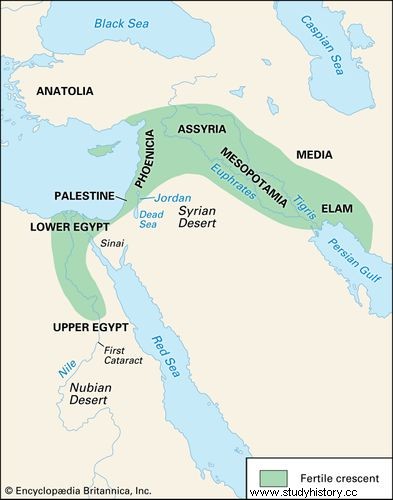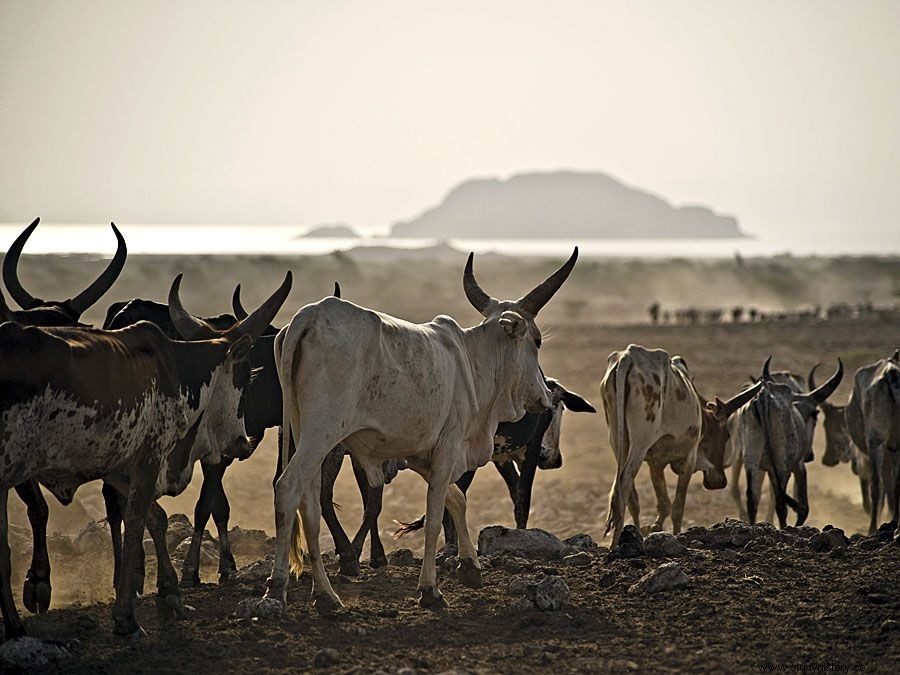Fertile Crescent , the region where the first settled agricultural Municipalities des Middle East and the Mediterranean Basin probably early 9th millennium v . Chr. Arose . The term was coined by the American orientalist James Henry Breasted popularized .

 Britannica Quiz Destination Africa:Fact or Fiction? Is Africa's northernmost point further north than Europe's southernmost point? See if your geographical knowledge points north or south on this journey through Africa.
Britannica Quiz Destination Africa:Fact or Fiction? Is Africa's northernmost point further north than Europe's southernmost point? See if your geographical knowledge points north or south on this journey through Africa. The Fertile Crescent includes a roughly crescent-shaped area of relatively fertile land that is in the past probably a more temperate, agriculturally productive Climate than today, especially in Mesopotamia and in the Niltal . It is between the Arabian Desert in the south and the mountains of Armenian Highlands to the north and extends from Babylonia and the adjacent Elam (the southwestern province of Persia, also called Susiana) over the Rivers Tigris and Euphrates after Assyria . From Zagros Mountains east of Assyria it continues west across Syria to Mediterranean and extends south to South Palestine . The Egyptian Nile Valley is often included as a further extension, especially since the short break in the Sinai is no larger than similar desert fractures that its Continuity in Mesopotamia and Syria interfere .
Across the region is Irrigation required for the best farming results and indeed common for every Agriculture by essential . Radiocarbon dates have shown that the beginning farming and village agglomerations in the Fertile Crescent to about 8000 v . Ch. , if not sooner, must be dated and that the use of irrigation was rapid. The ancient lands of the Fertile Crescent such as Sumer, Babylonia, Assyria, Egypt and Phoenicia are considered some of the earliest complex societies in the world.
